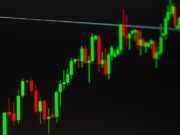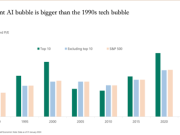Dividend-paying stocks have long been a cornerstone of successful investing strategies. They not only provide steady income but often signal financial stability and a commitment to shareholder returns. Over the last 50 years, dividend stocks have significantly outperformed their non-paying counterparts, delivering more than double the returns, according to research from Ned Davis and Hartford Funds.
But not all dividend stocks are created equal. The best performers don’t just pay dividends—they consistently grow them. These companies leverage strong cash flows to support both their business expansions and increasing shareholder payouts, making them ideal investments for steady income and long-term growth.
As 2025 begins, it’s the perfect time to review and refresh your portfolio with stocks that can provide a solid balance of yield and growth potential. Below, we highlight four standout dividend stocks that offer attractive yields, proven growth histories, and promising outlooks for the year ahead.
1. Brookfield Renewable (NYSE: BEP) – A Dividend Powerhouse in Clean Energy
Brookfield Renewable has carved out a strong position as a global leader in renewable energy. With an impressive track record of growing its dividend at a 6% compound annual rate since 2001, the company aims to continue increasing payouts at an annual rate of 5% to 9%. Currently yielding over 5%, Brookfield offers a compelling mix of growth and income.
What sets Brookfield apart is its extensive portfolio and growth pipeline. The company sells most of its electricity under long-term, inflation-linked contracts, ensuring predictable cash flows. Its pipeline of renewable energy projects and strategic acquisitions is expected to drive more than 10% annual funds from operations (FFO) per-share growth over the next five years. This combination of a reliable dividend and strong growth potential makes Brookfield Renewable a standout in the clean energy space.
2. Chevron (NYSE: CVX) – Fueling Growth with Strong Dividends
Chevron is a Dividend Aristocrat with over 30 years of consistent dividend growth. The energy giant currently yields an attractive 4.5% and has delivered more than 5% annual dividend growth over the past five years, outpacing both the S&P 500 and its peers in the energy sector.
Chevron’s disciplined approach to capital allocation is a key driver of its robust free cash flow, which is projected to grow at a 10% annual rate through 2027, assuming oil prices average $60 per barrel. Notably, Chevron’s proposed acquisition of Hess could double its free cash flow by 2027 at $70 oil prices, creating even more room for dividend increases. With its strong financial position and focus on shareholder returns, Chevron remains a top pick for dividend investors.
3. Walmart (NYSE: WMT) – A Dividend King in Retail
Walmart has been a household name for decades, serving over 255 million customers weekly through its namesake stores and Sam’s Club. The retail giant’s focus on cost leadership and technological innovation continues to drive its success, with e-commerce contributing more than half of its 5.3% same-store sales growth in the fiscal third quarter of 2024.
As a Dividend King, Walmart has raised its payout every year since 1974, backed by strong free cash flow. Over the first nine months of 2024, Walmart generated $6.2 billion in free cash flow, comfortably covering its $5 billion in dividends. The company’s impressive performance has propelled its stock to a 71% gain in 2024, far outpacing the broader market. With a 37 P/E ratio justified by its growth trajectory, Walmart offers a reliable dividend and solid growth prospects.
4. Home Depot (NYSE: HD) – Building on Dividend Strength
Home Depot, the largest home improvement retailer, boasts a solid dividend history with annual increases since 2010. Despite near-term challenges from elevated interest rates and cautious consumer spending, Home Depot’s 60% payout ratio keeps its dividend safe, currently yielding around 2.7%.
Recent economic shifts signal brighter days ahead. Existing home sales rose 4.8% in November, and the Federal Reserve’s rate cuts could stimulate further growth in home improvement spending. Home Depot’s long-term fundamentals remain strong, supported by a proven ability to weather economic cycles. With a P/E ratio of 26, the stock trades at a discount to the S&P 500, offering investors a compelling mix of income and growth potential.











